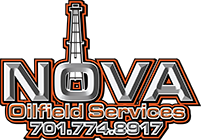In the oilfield industry, the reliability of our equipment is crucial for maintaining steady operations. Regular maintenance ensures all machinery functions at peak efficiency, minimizing the risk of unexpected breakdowns that can cause costly delays. Consistent upkeep of our oilfield equipment safeguards not only the machinery itself but also the safety and productivity of our workforce.
Neglecting regular maintenance can lead to wear and tear, reducing the lifespan of valuable assets. This oversight can result in increased operational costs and a higher likelihood of equipment failure that disrupts critical workflows. By prioritizing regular check-ups and servicing, we can catch minor issues before they escalate, protecting our investment and maintaining smooth operation on-site.
Understanding the significance of regular maintenance is essential for anyone involved in oilfield work. It ensures equipment longevity, safety, and overall operational efficiency, which are paramount for the success of any project. Keeping our equipment in top condition enables us to meet project deadlines and maintain a safe working environment for everyone involved.
The Crucial Role of Equipment Maintenance in Oilfield Operations
Proper equipment maintenance is vital for keeping oilfield operations running smoothly. Regular checks and servicing ensure that each piece of equipment is ready to perform its job without unexpected breakdowns. In oilfield environments, where work continues around the clock, any equipment failure can result in significant delays and lost productivity. Therefore, maintaining our equipment is not something we can overlook.
Moreover, well-maintained equipment is safer to operate. Regular maintenance helps identify potential issues before they become serious problems, reducing the risk of accidents. When we keep our equipment in good condition, we protect not only our investment but also the safety and well-being of everyone on the job site. Ensuring that all tools and machinery are functioning correctly helps us manage our work more efficiently and securely.
Key Benefits of Regular Maintenance for Oilfield Equipment
Regular maintenance provides numerous benefits that can have a substantial impact on our operations. One of the primary advantages is extended equipment lifespan. Routine upkeep helps prevent wear and tear from turning into major issues, meaning our equipment lasts longer and offers better value for the money invested. Regular servicing can save us from costly repairs and replacements, keeping our budgets in check.
Preventive maintenance also boosts productivity. Well-maintained equipment operates more efficiently, allowing us to complete tasks quicker and with fewer interruptions. This consistent performance means projects stay on schedule, reducing downtime and increasing overall output. By integrating regular maintenance into our routine, we ensure our equipment keeps running at peak performance, contributing to the success of our operations.
Signs Your Oilfield Equipment Needs Immediate Attention
Recognizing when oilfield equipment needs immediate attention is crucial to prevent costly breakdowns and maintain smooth operations. One of the first signs is unusual noise or vibrations coming from machinery, indicating internal issues or wear and tear. If equipment starts to operate less efficiently or performance drops, this is another red flag that maintenance is needed. Watching for these signs helps us address problems early before they lead to more serious failures.
Leaks or visible damage on equipment are clear indicators that repairs are necessary. Additionally, increased fuel or oil consumption can point to inefficient operation or underlying mechanical problems. Monitoring these signs and scheduling prompt maintenance can save us from expensive repairs and prolonged downtime, ensuring that our operations stay on track.
Tips for Creating an Effective Maintenance Schedule
Creating an effective maintenance schedule for oilfield equipment is essential for maximizing productivity and minimizing unexpected downtime. Start by consulting the equipment manufacturers’ guidelines for recommended maintenance intervals. These guidelines provide a solid foundation for determining when to perform routine checks and services.
In addition to following manufacturer recommendations, track the actual usage and performance of each piece of equipment. This helps identify patterns and predict when maintenance is likely needed. Another important tip is to train our team on basic maintenance tasks and signs of wear and tear. Empowering our crew to perform regular inspections and report issues promptly contributes to a proactive maintenance culture.
Conclusion
Proper maintenance of oilfield equipment is crucial for the success of our operations. Regular attention to machinery ensures peak performance, prevents costly breakdowns, and prolongs the lifespan of the equipment. By being vigilant for signs that equipment needs immediate attention and implementing an effective maintenance schedule, we can keep our projects running smoothly and efficiently.
Investing time in maintaining equipment pays off in fewer repairs and less downtime. It also enhances safety on our oilfield sites by reducing the risk of accidents caused by malfunctioning machinery. To support these efforts, consider exploring the comprehensive equipment rental and maintenance services offered by Nova Oilfield Services. Partnering with us ensures you have access to reliable oilfield equipment service and expert support, keeping your operations at their best.








